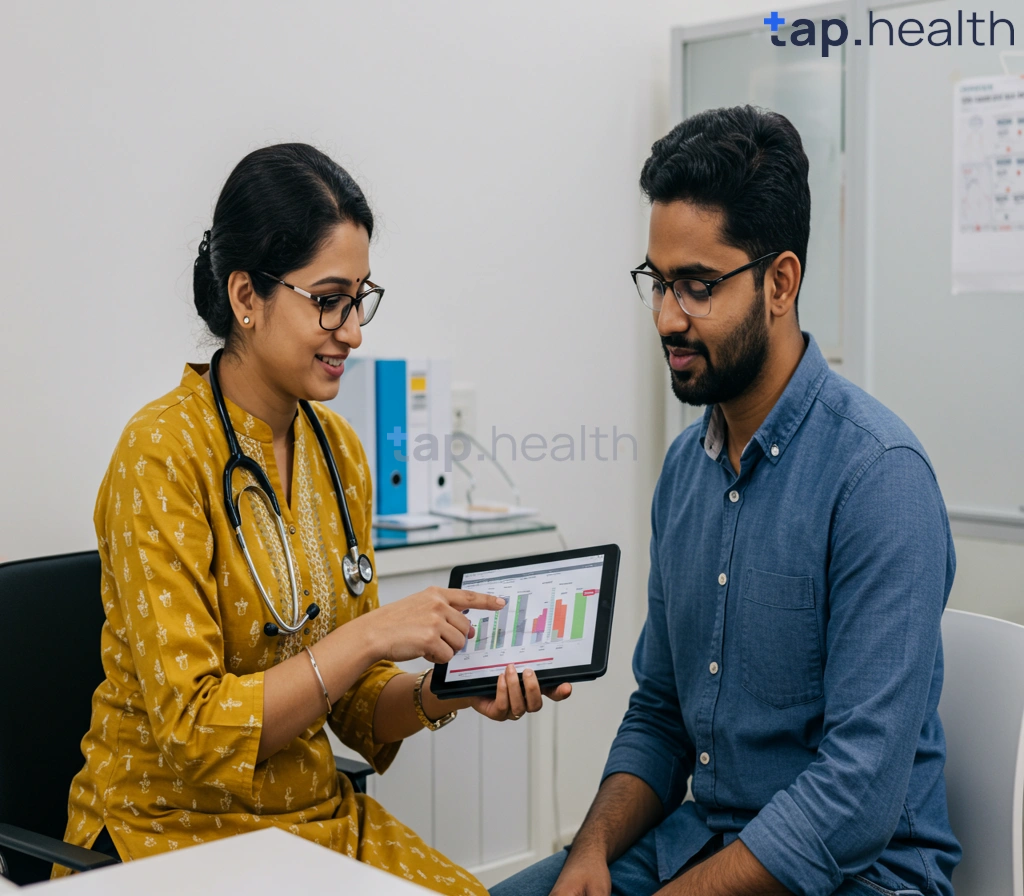Table of Contents
- Improving Diabetes Care: Communication Strategies for Better Outcomes
- Effective Communication: A Guide for Diabetes Patients and Caregivers
- Overcoming Communication Barriers in Diabetes Management
- Diabetes Communication Challenges? Find Solutions Here
- Better Diabetes Care Through Clear Communication: A Patient’s Guide
- Frequently Asked Questions
- References
Living with diabetes already presents significant challenges, but what happens when communication barriers further complicate care? For many patients, effectively managing their condition is hindered by difficulties with language, literacy, or hearing impairments. This blog post tackles the crucial issue of Bridging the Gap: Better Diabetes Care for Patients with Communication Challenges. We’ll explore practical strategies and innovative approaches healthcare providers can use to ensure clear, accessible information and support for all their diabetic patients. Let’s work together to improve outcomes and empower individuals to successfully manage their diabetes, regardless of their communication abilities.
Improving Diabetes Care: Communication Strategies for Better Outcomes
Effective communication is crucial for managing diabetes, especially in diverse populations like those found in India and tropical countries. Consider that 61% of people with diabetes are aged between 20-64 years, a demographic often juggling work and family responsibilities, while 39% are aged 65+ years, potentially facing additional communication barriers. These statistics highlight the urgent need for tailored strategies. Clear and accessible information is paramount for successful diabetes management.
Addressing Language and Literacy Barriers
Many individuals in India and tropical countries may have limited literacy or face language barriers that hinder their understanding of diabetes management. Simplifying medical information using plain language, visual aids, and local dialects is essential. Providing materials in multiple languages, including local dialects, increases accessibility and improves patient comprehension. This is critical in a region with such linguistic diversity.
Cultural Sensitivity and Personalized Approaches
Cultural beliefs and practices significantly influence healthcare decisions. Understanding and respecting these nuances is paramount. For example, engaging community health workers familiar with local customs can bridge communication gaps and build trust. Personalized education plans, considering individual lifestyles and cultural backgrounds, are more effective than generic approaches. Tailoring diabetes care to specific cultural contexts is key to improving patient compliance and outcomes. This is especially important when considering the unique challenges outlined in Managing Diabetes as You Age: Challenges and Solutions.
Leveraging Technology for Improved Communication
Technology offers powerful tools to enhance communication in diabetes care. Mobile health (mHealth) applications, SMS reminders, and telehealth consultations can improve access to information and support, especially in remote areas. These technologies can overcome geographical barriers and promote regular engagement with healthcare providers. Investing in accessible technology is a strategic step towards better diabetes management, particularly in these regions. Consider using short, simple messages to improve adherence to medication and lifestyle changes. Furthermore, the impact of comprehensive diabetes education cannot be overstated, as highlighted in How Diabetes Education Enhances Health Outcomes – Tap Health.
By implementing these communication strategies, healthcare providers can significantly improve diabetes care outcomes for individuals across India and tropical countries, ensuring that everyone has the opportunity to manage their condition effectively.
Effective Communication: A Guide for Diabetes Patients and Caregivers
Managing diabetes effectively hinges on clear and consistent communication. This is especially crucial in India and other tropical countries where, alarmingly, 50% of diabetes cases remain undiagnosed, according to the International Diabetes Federation. This statistic highlights the urgent need for improved communication between patients, caregivers, and healthcare providers. Misunderstandings can lead to poor adherence to treatment plans and ultimately, serious health complications.
Improving Communication with Healthcare Providers
In many parts of India and tropical regions, language barriers and cultural nuances can impede effective communication with doctors and nurses. Preparing a list of questions beforehand can help ensure you address all concerns. Consider bringing a family member or friend for support, especially if you have difficulty understanding medical terminology. Actively participate in consultations, don’t hesitate to ask for clarification, and ensure you understand your treatment plan thoroughly.
Communicating Effectively with Family and Friends
Open and honest communication with family and friends is vital for successful diabetes management. Educate your loved ones about your condition and the challenges you face. Clearly explain your dietary needs and medication schedule, and encourage their support in maintaining a healthy lifestyle. Involving your support network can significantly improve your overall well-being and adherence to your treatment plan. For example, understanding how to manage your diet is crucial, and sometimes, emotional eating can be a challenge. Learn more about Addressing Emotional Eating in Diabetes: Strategies.
Utilizing Available Resources
Many organizations in India and tropical countries offer support groups and educational programs for people with diabetes. These resources provide valuable opportunities to connect with others facing similar challenges and to learn more about effective diabetes management. Seeking out these resources can significantly improve communication and understanding, leading to better health outcomes. Take the initiative to find local support networks and educational materials to empower yourself and your loved ones in managing this chronic condition. Planning to travel soon? Check out our guide on Traveling with Diabetes: Essential Tips for a Safe & Healthy Journey to ensure a smooth and healthy trip.
Overcoming Communication Barriers in Diabetes Management
The global burden of diabetes is significant, with over 75% of people with diabetes residing in low- and middle-income countries, as highlighted by the International Diabetes Federation. In India and other tropical countries, effective diabetes management faces unique challenges, often stemming from communication barriers. These barriers significantly impact patient understanding, adherence to treatment plans, and overall health outcomes.
Language and Literacy Challenges
Many individuals in these regions may have limited literacy or face communication difficulties due to language variations and dialects. Simplified educational materials, translated into local languages, and utilizing visual aids become crucial for effective diabetes education. Employing community health workers fluent in local languages can bridge this gap and foster trust.
Cultural and Social Factors
Cultural beliefs and practices can also influence communication and adherence. Addressing misconceptions about diabetes through culturally sensitive approaches is essential. Engaging community leaders and religious figures in health promotion initiatives can significantly improve communication and trust. For example, incorporating traditional healing practices where appropriate, while emphasizing the importance of modern medicine, can be a powerful strategy. For more tips on effective management, check out 10 Proven Tips for Effective Diabetes Management.
Improving Access to Information
Limited access to reliable health information further exacerbates the problem. Promoting diabetes awareness programs through accessible channels like radio, television, and community gatherings is vital. Utilizing mobile technology and SMS messaging can provide timely reminders and support, especially in regions with limited internet access. Investing in local training programs for healthcare providers ensures they are equipped to effectively communicate with diverse patient populations. Maintaining a strong immune system is also crucial, and you can learn more about that in our article on Boosting Immunity While Managing Diabetes. Ultimately, a multi-pronged approach that considers the unique cultural and linguistic contexts of these regions is crucial for improving diabetes care and outcomes.
Diabetes Communication Challenges? Find Solutions Here
Managing diabetes effectively hinges on clear communication between healthcare providers and patients. However, in diverse regions like India and other tropical countries, significant communication barriers exist, impacting diabetes care. The global diabetes burden is staggering; the IDF Diabetes Atlas projects a rise from 536.6 million cases in 2021 to a projected 783.7 million by 2045, with prevalence increasing from 9.8% to 11.2%. This highlights the urgent need for improved communication strategies.
Addressing Language and Literacy Barriers
Many individuals in India and tropical countries may face challenges due to language barriers or low health literacy. Simplified, culturally appropriate educational materials, translated into local languages and dialects, are crucial. Visual aids, such as pictures and diagrams, can significantly enhance understanding, particularly for those with limited literacy skills. Consider using local dialects in addition to national languages for better reach and comprehension.
Cultural Sensitivity and Patient Engagement
Cultural beliefs and practices can influence how individuals perceive and manage their diabetes. Healthcare professionals need to adopt a culturally sensitive approach, respecting patient preferences and beliefs while providing evidence-based advice. Active listening and patient-centered communication are essential for building trust and encouraging adherence to treatment plans. Engaging family members and community health workers in the communication process can also improve outcomes. Understanding the nuances of diabetes management, as discussed in Personalized Diabetes Control: Your Key to Better Health, is also crucial for effective communication.
Leveraging Technology for Better Communication
Technology offers innovative solutions. Telemedicine platforms and mobile health (mHealth) apps can facilitate remote monitoring and provide personalized diabetes education. These tools can overcome geographical barriers and provide convenient access to healthcare information in multiple languages. Investing in digital health literacy programs is key for successful implementation.
Conclusion: Improving Diabetes Care in India and Tropical Countries
Addressing communication challenges in diabetes care requires a multi-pronged approach. By implementing culturally sensitive communication strategies, utilizing technology effectively, and ensuring access to information in local languages, we can significantly improve the lives of millions living with diabetes in India and other tropical countries. Let’s work together to bridge this gap and empower individuals to manage their diabetes effectively. It’s also important to dispel common myths, such as the misconception that diabetes is contagious; read more about this in our article: Can Diabetes Be Transmitted? Understanding the Facts and Myths.
Better Diabetes Care Through Clear Communication: A Patient’s Guide
Managing diabetes isn’t just about medication and diet—it’s also about effective communication between patients and healthcare providers. Poor communication often leads to misunderstandings, poor adherence, and uncontrolled blood sugar levels. In fact, studies show that over 30% of people with diabetes have HbA1c levels above 9%, a clear sign that many are struggling with proper management.
This issue is especially important in India and tropical countries, where language barriers, cultural differences, and varying levels of health literacy can make understanding treatment plans more difficult. Clear communication can bridge these gaps and help patients achieve better health outcomes.
Bridging the Gap: Practical Tips for Patients & Providers
Improving communication doesn’t have to be complicated. Here are practical steps:
For Patients
-
Ask questions openly – No question is too small. Clarify doubts about medication, diet, or lifestyle changes.
-
Take notes – Write down key points during consultations to remember instructions.
-
Share concerns honestly – Let your doctor know about side effects, challenges with diet, or financial difficulties in accessing care.
For Healthcare Providers
-
Use plain language – Avoid medical jargon; explain in simple terms.
-
Incorporate visuals – Diagrams, charts, and handouts can help patients understand better.
-
Be culturally sensitive – Tailor advice to local foods, traditions, and beliefs.
-
Involve family – Family members can support adherence and help patients follow treatment more effectively.
Seeking Support in Your Community
In India and other tropical regions, community-based programs and support groups play a vital role in diabetes care. These initiatives often:
-
Provide education in local languages.
-
Offer culturally relevant advice and meal planning.
-
Create a support network where patients can share experiences.
Actively participating in these groups can significantly improve self-management, confidence, and long-term health outcomes.
Final Word
Managing diabetes requires more than medicine—it requires understanding. Clear, open, and respectful communication between patients and healthcare providers leads to better blood sugar control, improved quality of life, and fewer complications.
Remember: communication is a two-way street. Patients must feel comfortable asking questions, and providers must ensure their advice is accessible and culturally relevant.
Frequently Asked Questions on Diabetes Care Communication Challenges
Q1. What are the biggest challenges in managing diabetes in India and other tropical countries?
Many people with diabetes in these regions face challenges like low literacy, language barriers, and differing cultural beliefs that affect their healthcare choices.
Q2. How can communication barriers be overcome to improve diabetes care?
Using simple language and visuals in multiple languages, involving community health workers, and creating personalized education plans are key strategies. Technology like mHealth apps and telehealth can also help.
Q3. What is the role of technology in improving diabetes management in these areas?
Technology, such as mHealth apps and telehealth, offers better access to information and support, especially in remote areas, improving communication and care.
Q4. How can we address misconceptions about diabetes within different cultures?
Using culturally sensitive methods to educate people about diabetes and providing access to support groups can help change misconceptions and improve understanding.
Q5. Why is a multi-pronged approach important for improving diabetes care globally?
A combined strategy addressing communication barriers, using technology, and tackling cultural misconceptions is essential to improve diabetes care and reduce the global disease burden.
References
- A Practical Guide to Integrated Type 2 Diabetes Care: https://www.hse.ie/eng/services/list/2/primarycare/east-coast-diabetes-service/management-of-type-2-diabetes/diabetes-and-pregnancy/icgp-guide-to-integrated-type-2.pdf
- Engaging with AI: How Interface Design Shapes Human-AI Collaboration in High-Stakes Decision-Making: https://arxiv.org/pdf/2501.16627



